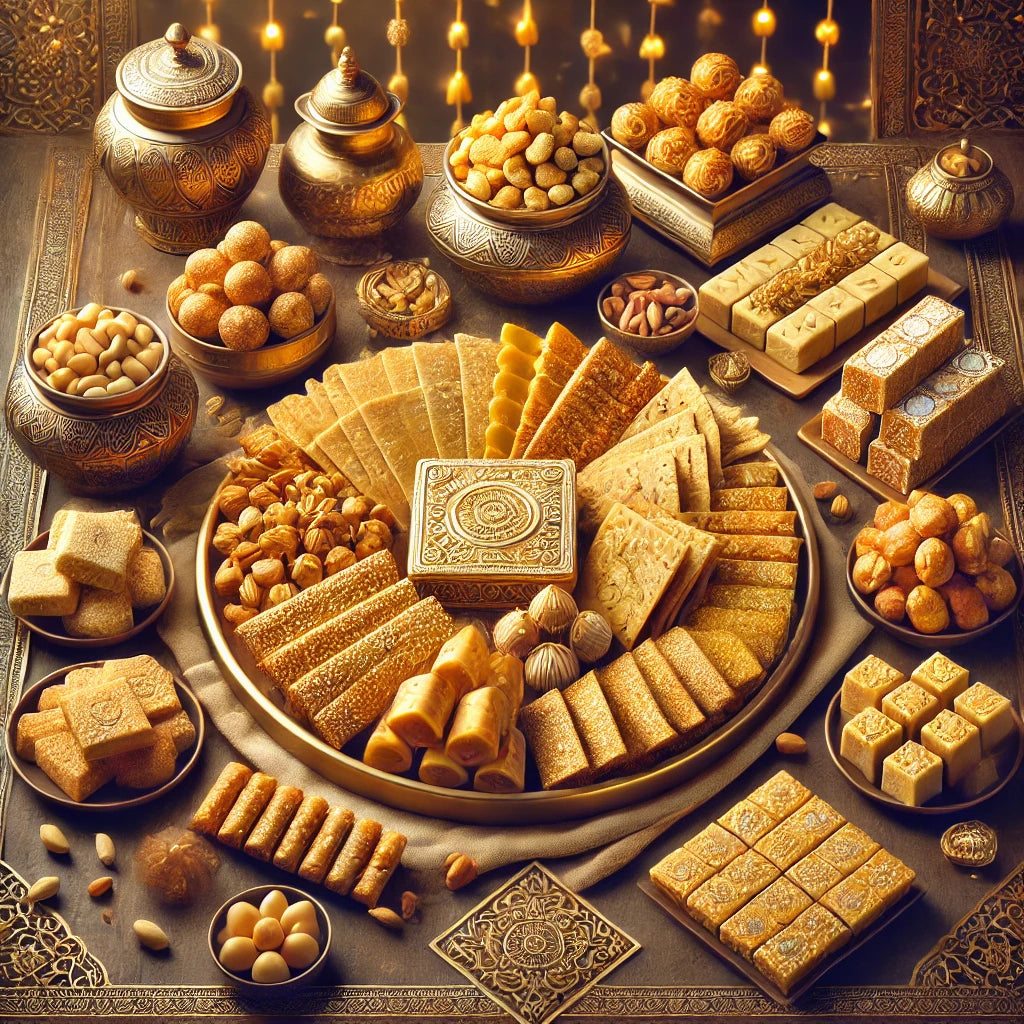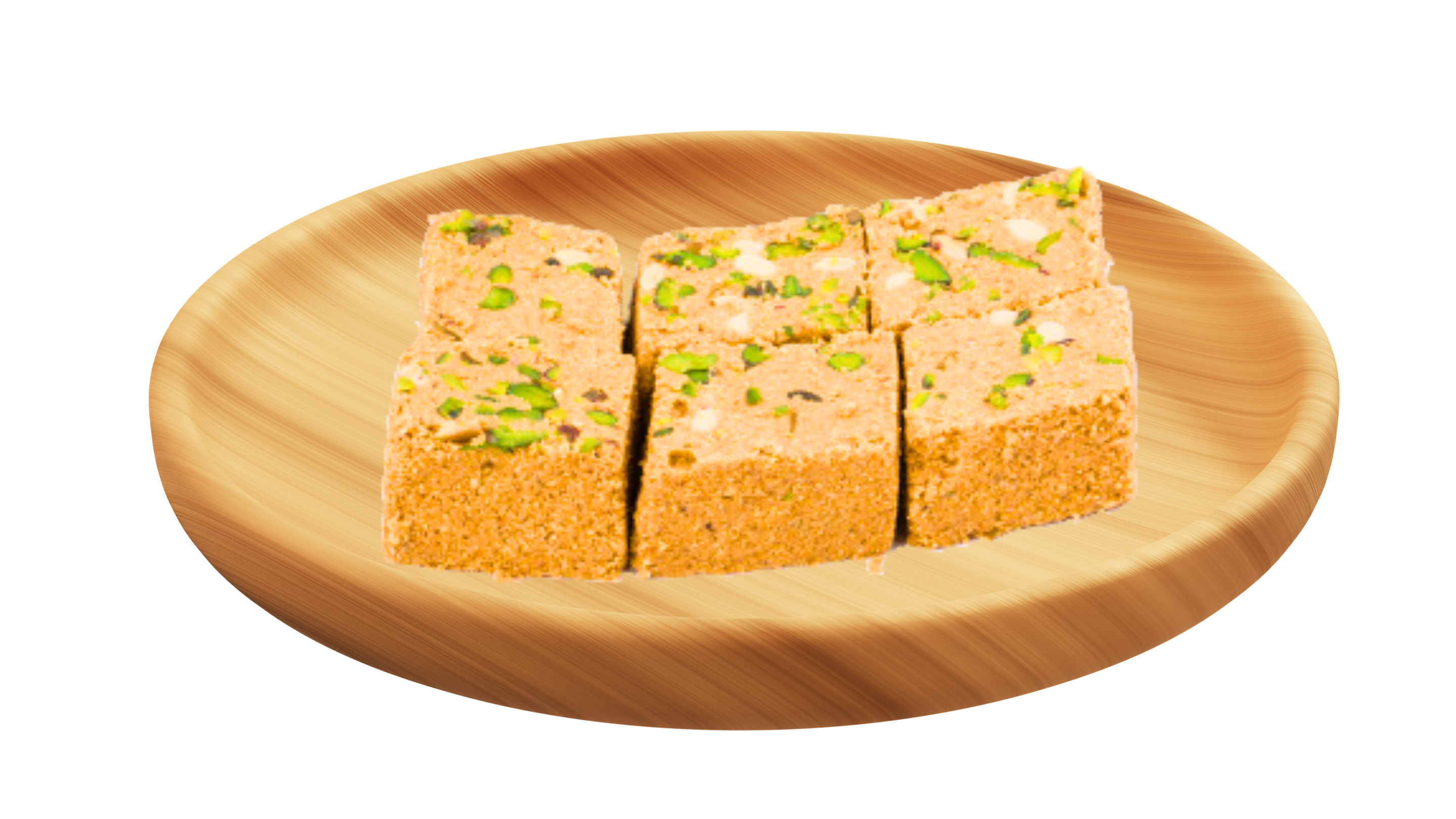लेख: Overview of Gajak and Chikki, significance in Indian culture

Overview of Gajak and Chikki, significance in Indian culture
Introduction
Gajak and Chikki are more than just traditional Indian sweets; they represent the heritage and flavor of Indian festivals, particularly in the winter months. For generations, these delicious treats have been an essential part of celebrations like Makar Sankranti and Lohri, where their crunchy textures and rich flavors offer a perfect accompaniment to the cool weather. While Gajak and Chikki may appear similar, they differ in texture, taste, and preparation techniques, each carrying its own unique charm. Understanding the intricacies of these sweets not only enriches our cultural experience but also makes us appreciate the craftsmanship involved in making them.
Both Gajak and Chikki are traditionally made from jaggery (unrefined sugar) and nuts or seeds, which lend them their signature sweetness and crunch. However, as simple as they may seem, these sweets hold deep roots in Indian history and are also a reflection of the regional diversity found within Indian cuisine. From Rajasthan’s Til Gajak to Maharashtra’s Peanut Chikki, these sweets have traveled across India, bringing warmth and energy during the colder months.
What is Gajak?
Gajak is a traditional Indian sweet, especially popular in the northern regions of the country, where winter temperatures drop significantly. It’s a dry, crunchy delicacy made primarily from sesame seeds (til), jaggery, and ghee. The process of making Gajak involves cooking jaggery to a particular consistency before mixing it with roasted sesame seeds. This mixture is then flattened and shaped, usually into rectangular pieces, before it hardens into a brittle, crunchy snack.
There are several types of Gajak, each with slight variations in ingredients. Til Gajak is the most common type, made with sesame seeds, while other variations may include peanuts or groundnuts, adding a distinct flavor to the base. Another popular version is Gud Gajak, which uses molasses or a thicker jaggery mixture, making it slightly softer but equally rich in flavor.
What is Chikki?
While Gajak is a beloved winter snack, Chikki is a year-round favorite found in many Indian households. This sweet treat, made from jaggery and roasted nuts or seeds, is particularly famous in the western and southern regions of India. The key ingredients of Chikki are usually peanuts or groundnuts, but variations include sesame seeds, almonds, cashews, or even puffed rice.
Peanut Chikki, for instance, is the most common type and is often sold in small squares or bars. In contrast to Gajak’s brittle texture, Chikki tends to be slightly chewier, with a richer, caramel-like flavor due to the use of jaggery. The preparation of Chikki is simple: jaggery is melted down to a sticky consistency before nuts or seeds are added, and the mixture is spread out to cool and harden.
The Difference Between Gajak and Chikki
Though Gajak and Chikki share similar ingredients like jaggery and nuts, they have distinct differences in texture, taste, and cultural association. Gajak is typically crunchier and has a more brittle texture due to the roasting of sesame seeds, which are the main ingredient. It’s traditionally consumed during winter because of its warming properties, making it a perfect snack for the cold.
On the other hand, Chikki has a chewier texture, largely because of the peanuts or other nuts used in its preparation. It’s consumed throughout the year and is known for its energy-boosting qualities, especially among children and athletes. The cultural significance also varies: Gajak is closely linked to winter festivals in North India, while Chikki is a popular treat in the western states, like Maharashtra, where it’s enjoyed year-round.
Nutritional Benefits of Gajak
Gajak isn’t just a delicious snack; it’s also packed with nutrients, making it a healthy option for those looking for a natural energy boost. The sesame seeds in Gajak are a rich source of healthy fats, fiber, and essential minerals like calcium, iron, and magnesium. Jaggery, the natural sweetener used in Gajak, is full of antioxidants, helping in detoxifying the body and improving digestion.
Because of these ingredients, Gajak is considered a great winter snack, as it provides warmth and energy. Sesame seeds also contain plant-based protein, which is beneficial for maintaining muscle mass and overall body strength. In traditional Ayurveda, Gajak is recommended during colder months as it helps balance the body's internal energy, making it a perfect festive snack.
Nutritional Benefits of Chikki
Like Gajak, Chikki is a powerhouse of nutrition, thanks to its primary ingredients: peanuts and jaggery. Peanuts are rich in protein, healthy fats, and fiber, making them a great snack for sustained energy. They are also a good source of essential nutrients like vitamin E, magnesium, and folate, which are important for heart health and maintaining a balanced diet.
Jaggery, the unrefined sugar used in Chikki, is a healthier alternative to white sugar, providing minerals like iron and potassium. Chikki is often considered an ideal snack for growing children, athletes, and those who need an energy boost without the crash that comes with processed sugars. It’s also widely recommended for its role in improving digestion and fighting fatigue.
How Gajak is Made
The process of making Gajak involves several steps, each requiring precision to achieve the right texture and flavor. First, jaggery is heated until it melts into a thick syrup. The temperature must be carefully monitored to ensure the syrup reaches the right consistency. Once ready, roasted sesame seeds or other ingredients like peanuts are mixed into the jaggery syrup. This mixture is then rolled out thin and cut into squares or rectangles










एक टिप्पणी छोड़ें
यह साइट hCaptcha से सुरक्षित है और hCaptcha से जुड़ी गोपनीयता नीति और सेवा की शर्तें लागू होती हैं.